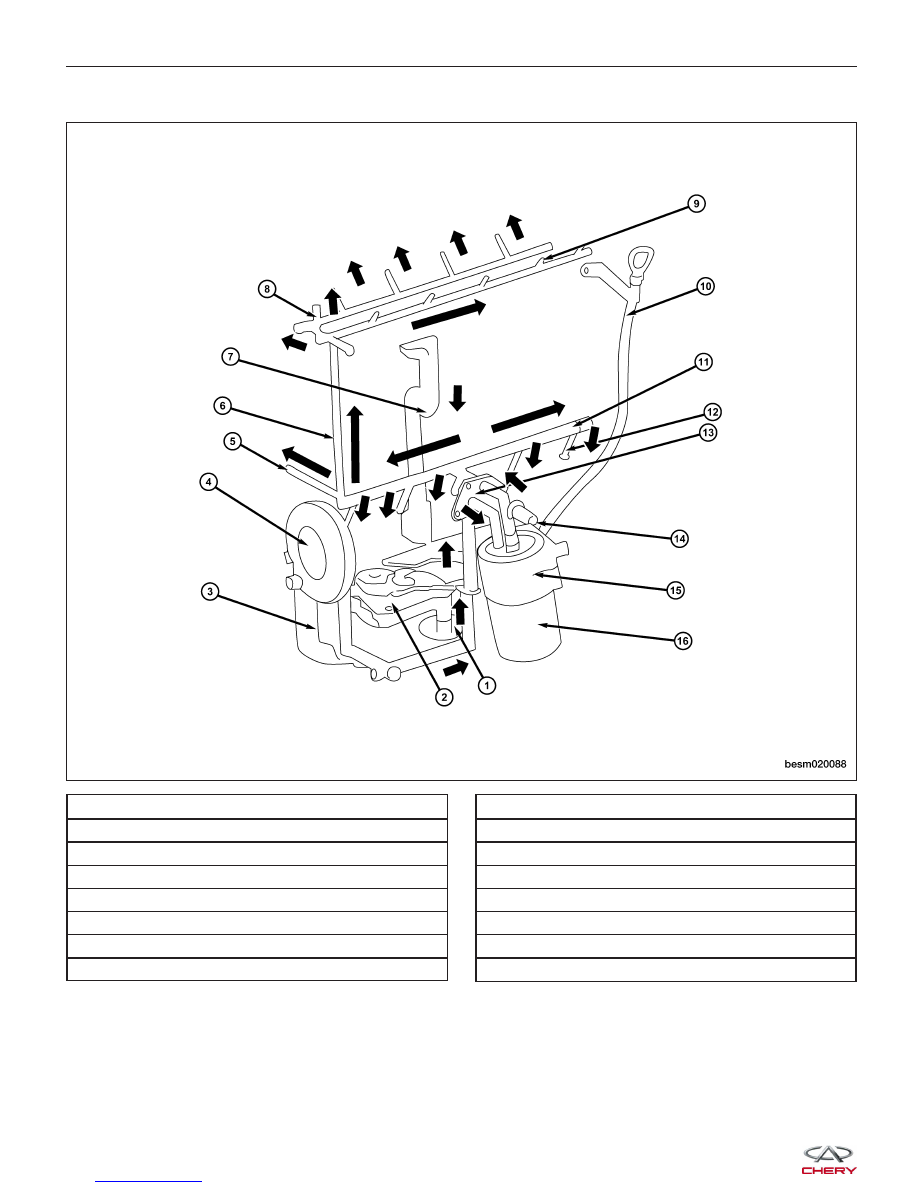Chery Tiggo. Manual - part 11

Engine Oil Flow Diagram
1 - Oil Pump Strainer
2 - Baffle Plate
3 - Oil Pan
4 - Oil Pump
5 - Turbocharger Inlet Oil Passage (if equipped)
6 - To Cylinder Head
7 - Oil Return Passage
8 - To Front Bearing Cap
9 - To Middle Bearing Cap
10 - Oil Dipstick
11 - To Crankcase
12 - Crankcase Pipe
13 - Oil Filter Bracket
14 - Oil Pressure Switch
15 - Oil Cooler
16 - Oil Filter
GENERAL INFORMATION
BESM020088